July 8, 2018
Martha O'Kennon
After several weeks of brutally hot weather, Friday was deliciously cool and the temperature turned cold overnight to a fall temperature. Some, but not all, oak new growth is this gorgeous red and velvety. The black raspberries must have known something was coming as the whole "crop" ripened almost completely in the past few days. I labeled this milkweed as Swamp Milkweed when I planted it. But now it looks more like Aesclepias tuberosa (butterfly weed).


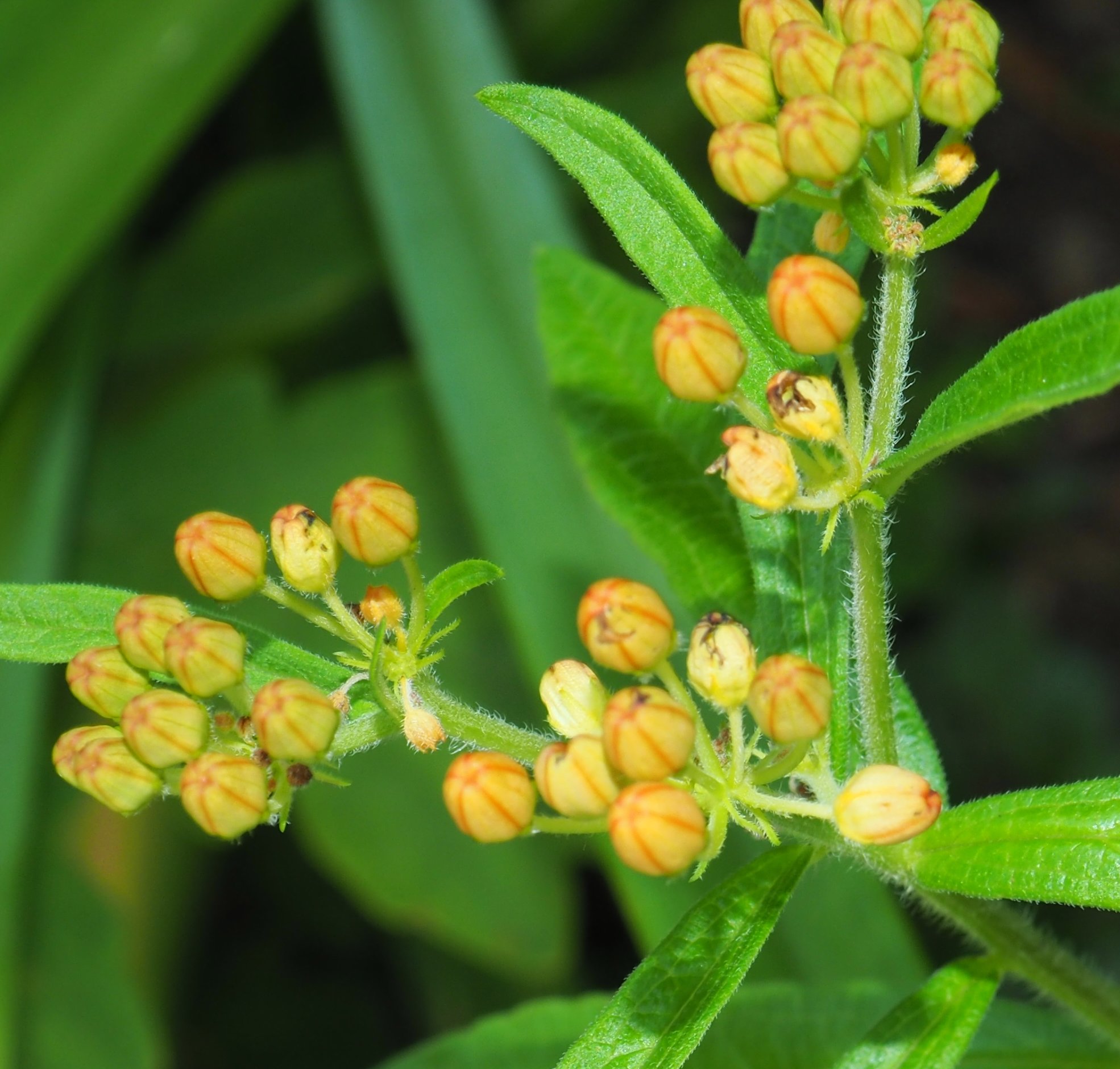
Remember that there is information in the name of the file for each image. You can see it by mousing over the image - look at the lower left of the screen. Or you can click on the image to get to the (usually) larger image. Then the info is displayed in the address line above. Sometimes the second click will actually display a different view of the original image.
We had many different-looking ants this week. Sometimes we don't look for a different species or genus until we have heard of it in conversation or seen it in a collector's website such as bugguide.net or iNaturalist.org. But let's say there were quite a few ants this week, not all of which I had heard of before First is our usual Carpenter Ant, but not the species that damages buildings. Second, a huge red ant all wrapped up for supper by a spider. Third is my Ant of the Week pick. Doesn't it look like something out of Dr. Who, with its mechanical joints? Look at the head - it's clearly a bug head. Another Ant Mimic?
The last one is odd, its being a black ant on yellow and black legs.




More barklouses! The raggedy-looking one is a scaly-winged barklouse (Echmepteryx hageni). I've probably never seen the second one.


Here are two kinds of tiny bees, but don't take my word for it since they also might be bee-like wasps.


This beetle knows it looks good in basic black. The second knows the same about this pretty green color. But some spider has decided on Green Beetle Wrap for supper. I thought this last one would make a great complex picture, but I can't decipher the complexities. It could be a bug but it looks like a beetle to me.

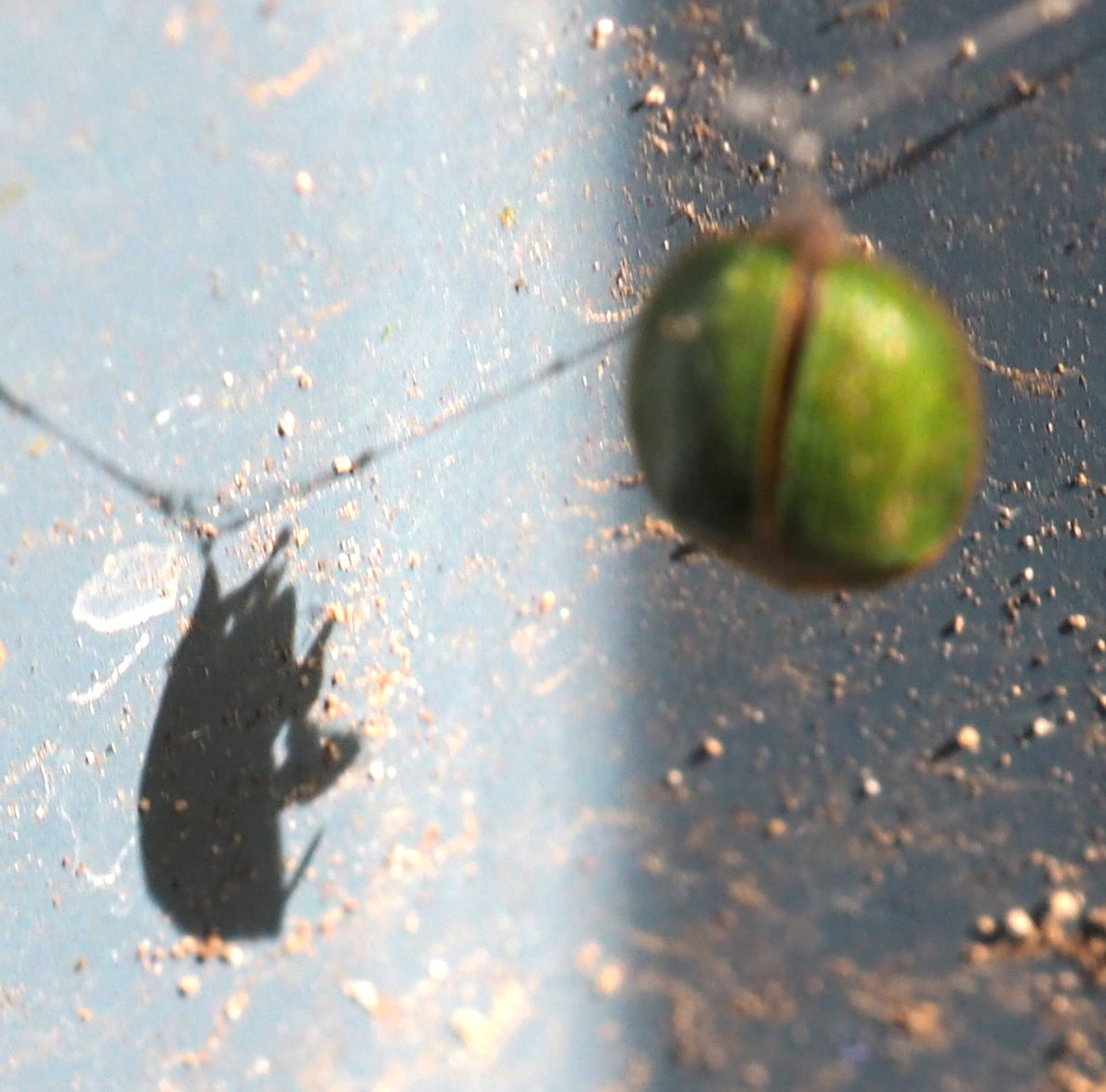

Here is another beetle, one of the Tumbling Flower Beetles. Then we have another wrapped Green Weevil and yet another Redbud Bruchid Weevil.



How about some fun? Here are a few leafhoppers (or relatives):
First is the Candy-Stripe Leafhopper, probably your favorite as well as mine. Second is probably a relative of the Japanese maple leafhopper.
And number 3? It's one of our older friends, the blue-tones-to-green one.
Number 4 is my even better fave. Its genus, Scaphoideus, contains about a dozen species, each only differing in a color pattern, but all containing that abstract flower pattern near the tail.




Here are just a few more leafhoppers. This first one used to have a different surname (genus). It used to be Coelidia olitoria, but now is Jikradia olitoria. The change was because this leafhopper was a transplant to this continent and the DNA is now slightly different. This bug has fascinated me for years, especially nymphs like this, who light with their backs bent back and a very sad-looking face. Number 1 is a more light-colored variety, but it's DNA-similar to Number 2, who is Jikradia olitoria, but with brightening colors. Doesn't it look as if it is challenging us to come closer? The third image is of a red leafhopper. At first I thought the two big white "lines" spreading on the abdomen were the antennae, but antennae don't start anywhere but on the head.



Here are some more bugs, called plant bugs. They mostly are close to the same size but the color combo on their wings changes from bug to bug.
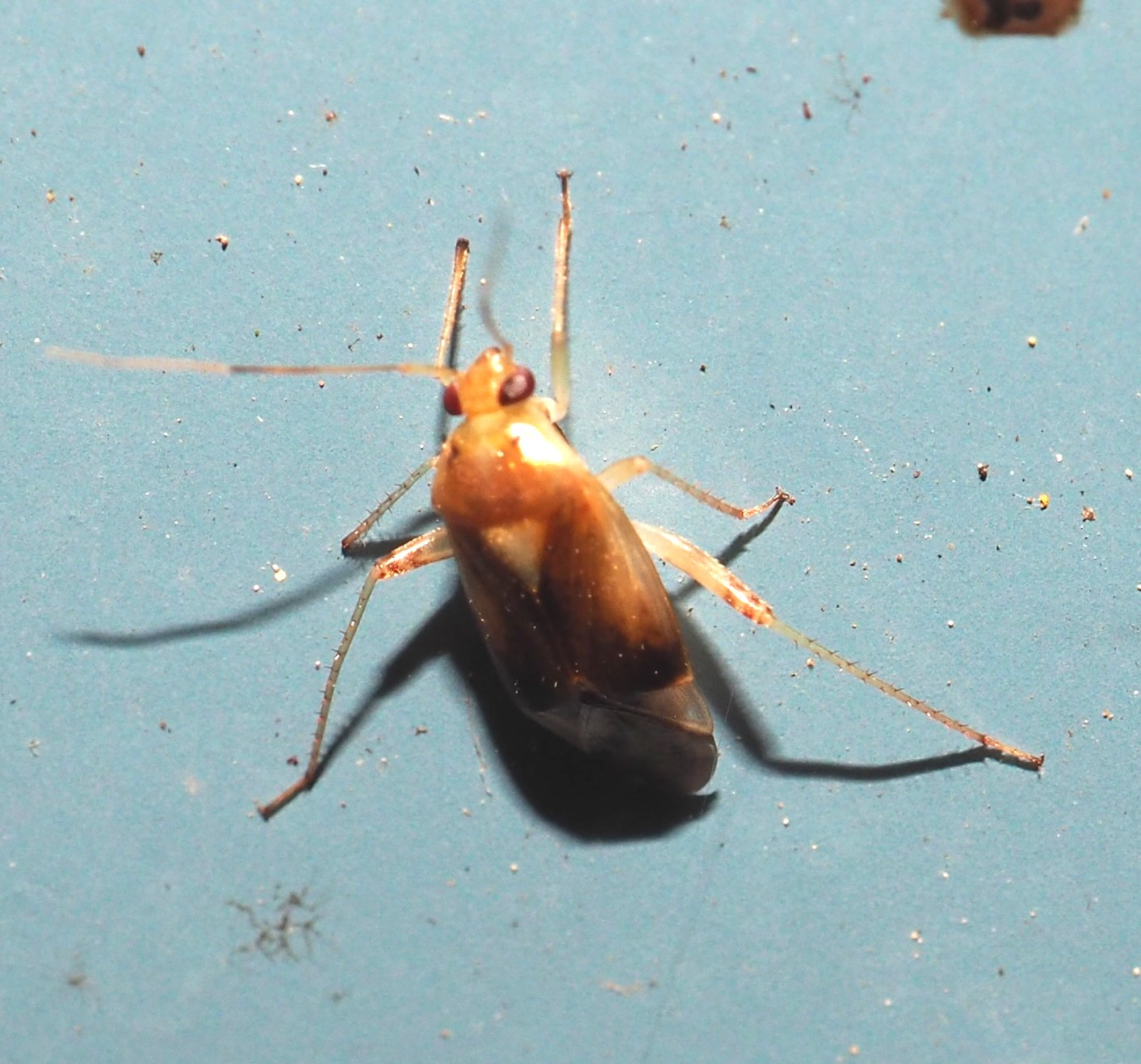
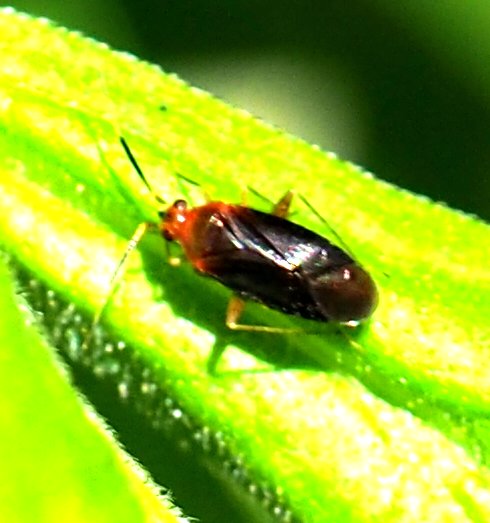
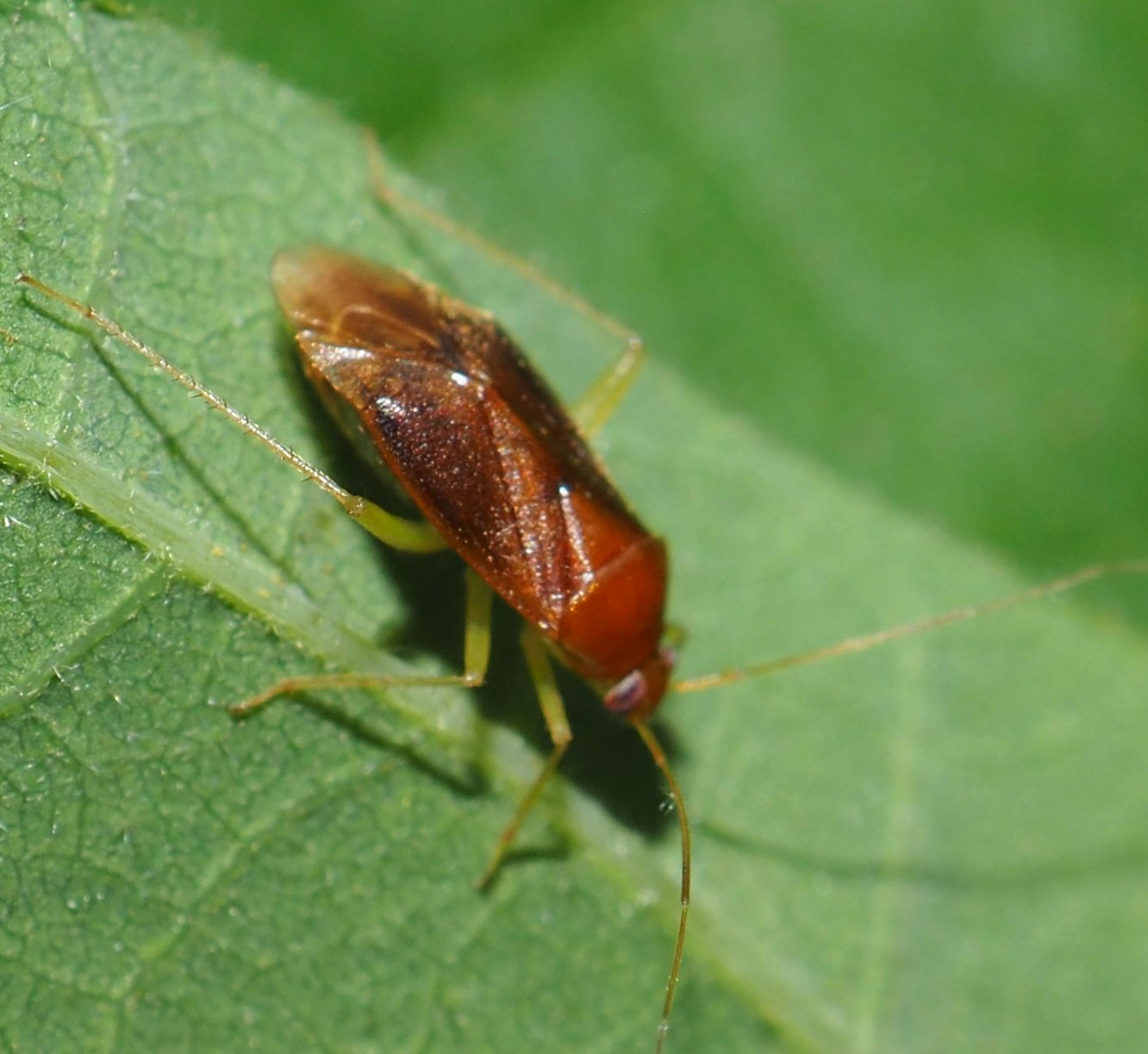
More plant bugs. The first here I first saw as black and white, but the black is itself a combo of green and yellow. They were the most common plant bug here this week. The third image is of another plant bug, whose name is as yet undetermined.


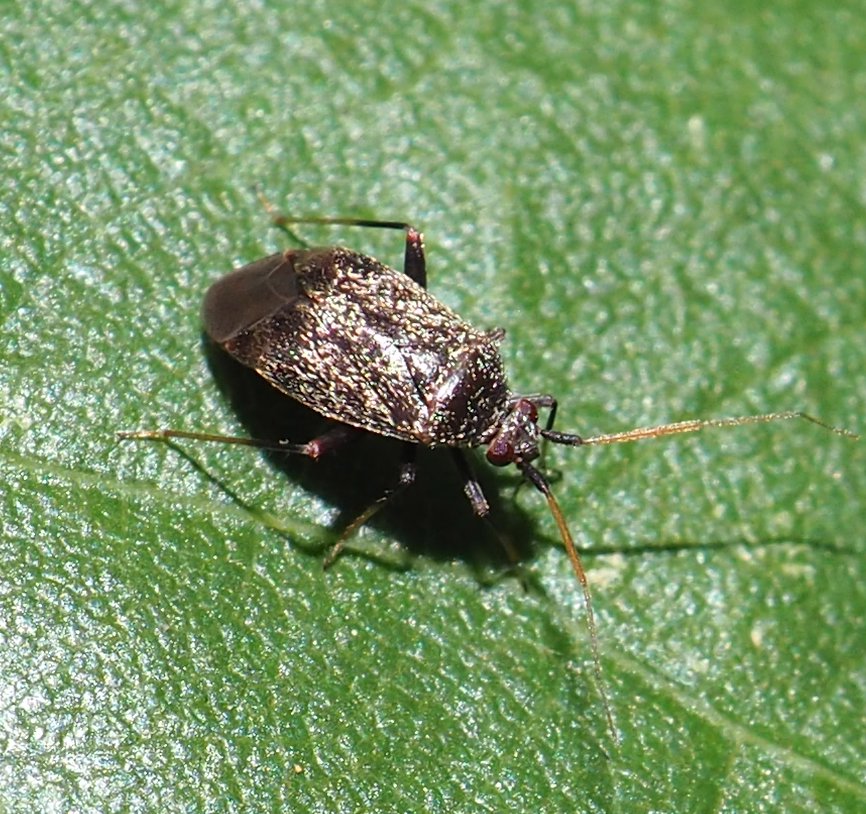
Another new thing for this week. We have had Issid Planthoppers such as Ionia simplex, whose nymphs have plastic-looking strands coming from the rear end. Picture 1 shows one from June 15 of last year. This week for the first time, I saw a similar planthopper but the stuff coming out ITS rear is more like fluff. It is called a Two-striped Planthopper nymph.
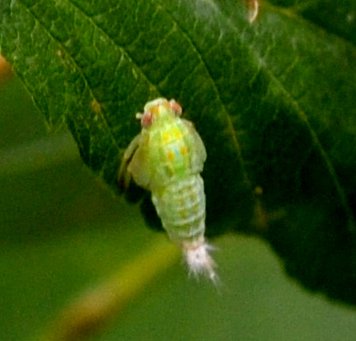

Our next stop in Bugville will be with the Stink Bugs and the White-margined Burrowing Bug. First off, the so-mentioned WMBB. Picture 2 is a beautiful red and black Stinker. Picture 3 was a pretty little blue-black Stinker. Now for the bad news. Pictures 2 and 3 are BOTH early instars of guess what- our Brown Marmorated Stink Bug!
I am underwhelmed.
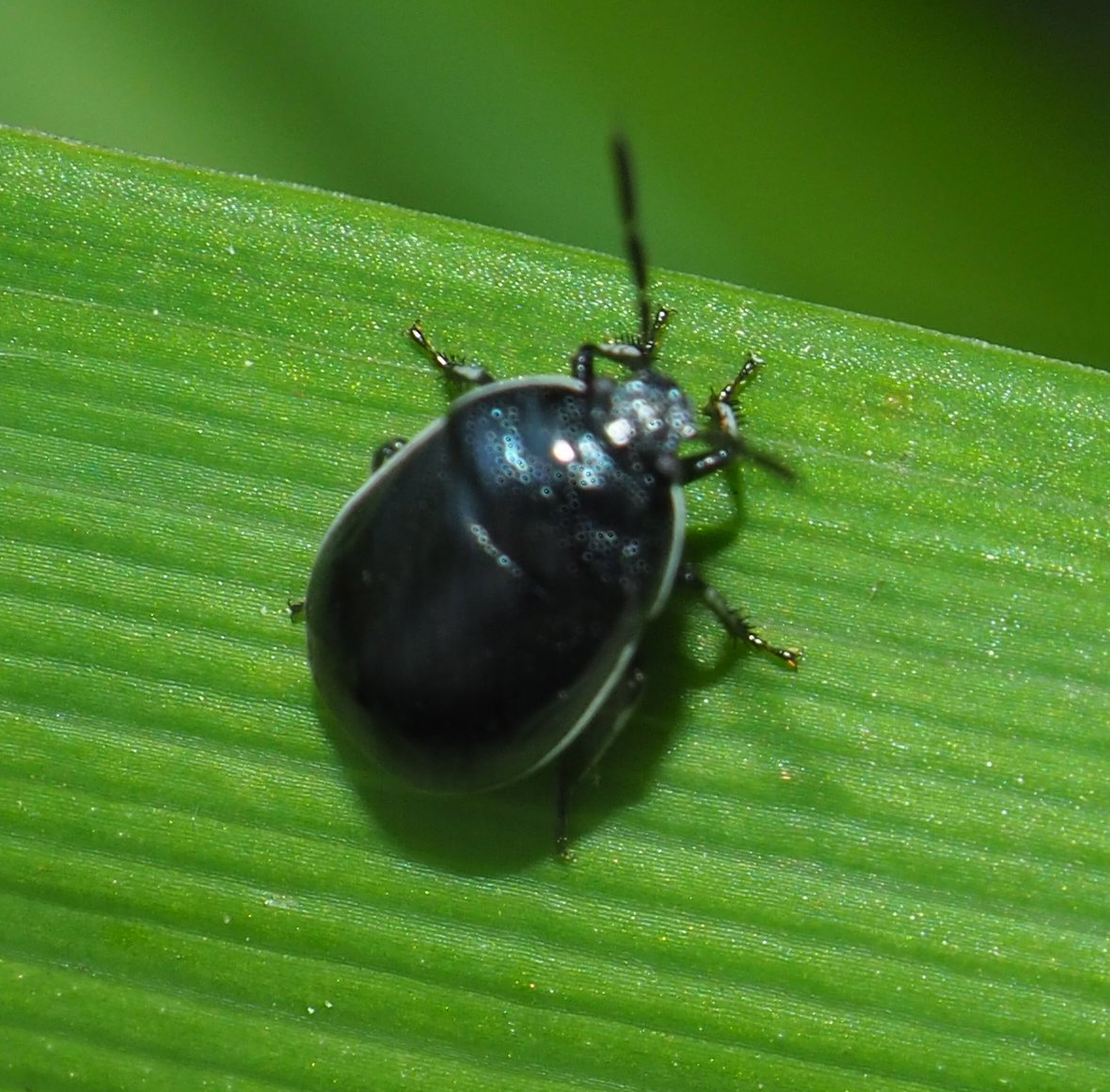


Sorry to say, all the pictures in this row are from a ventral view. I suspect the creature in view is showing off its truly awesome ventral markings. But that doesn't bring me closer to seeing what the animal IS, though I'm going to tack "plant bug" to it until more info comes my way.



While we are still hanging onto the bugs, there is something you have GOT to see. I believe I've shown this year a thing that I called a "gall" on the redbud tree. I recorded it as something I'd only seen on redbud trees. I included a picture of it in my original talk on "Nature in the Small" in 2016. I dutifully took this picture but when I came in to crop the afternoon's pictures, that's when I saw the little critters coming out of the disc. To me they looked like tiny assassin bug nymphs. On the 3rd, I again spotted a few tiny assassin bugs not far from the mother tree.
I did some preliminary reading up on the subject of where the best-known assassin bugs get their big start. It turns out that these little guys are probably Zelus renardii (foxy assassins); there is another locus for Wheel bugs, which I've never seen (bug or wheel). I don't know what the connection is with our more usual Zelus luridus.
Probably for each species of assassin (with exceptions) there is a locus plant where they can propagate. Keep tuned, or better yet "google it". I think it isn't going to be a trivial pursuit.



My neighbor Jim found this wonderful Tussock Moth caterpillar on his front door. What a beauty! It turns out to be a Hornbeam Caterpillar, Orgyia leucostigma (White-marked.) It will turn out to be a rather drab moth, but look at this youth! #2 is a juvenile of something buggish - but what? And what is #3?



Here are a batch of flies, starting with one very little fly, and followed by two kinds of Chironomus midges.




This happy couple for some reason reminded me of the tune to the 1812 Overture, don't ask!
The second image is of two robber flies mating on a light feature on the front porch.
The second and third images are female and male respectively of the species Chrysopilus quadratus. See how you can differentiate the female (eyes farther apart ) from the male (eyes come together at center of head).




A moth fly (a fly that mimics a moth); a flesh-eating fly; a Tiger crane fly; and a pink fly with spotty wings.




Long-legged flies often have very colorful wings (due to iridescence).




Last fly available will see you now.

The baby Orthoptera keep growing - this little golden grasshopper showed up this week. I think the next critter is either a grasshopper or a cricket.. Nope- the last one is a baby katydid.




A few harvestmen (daddy-long-legs).



Here is a tiny moth. And here are two versions of a spider art installation.


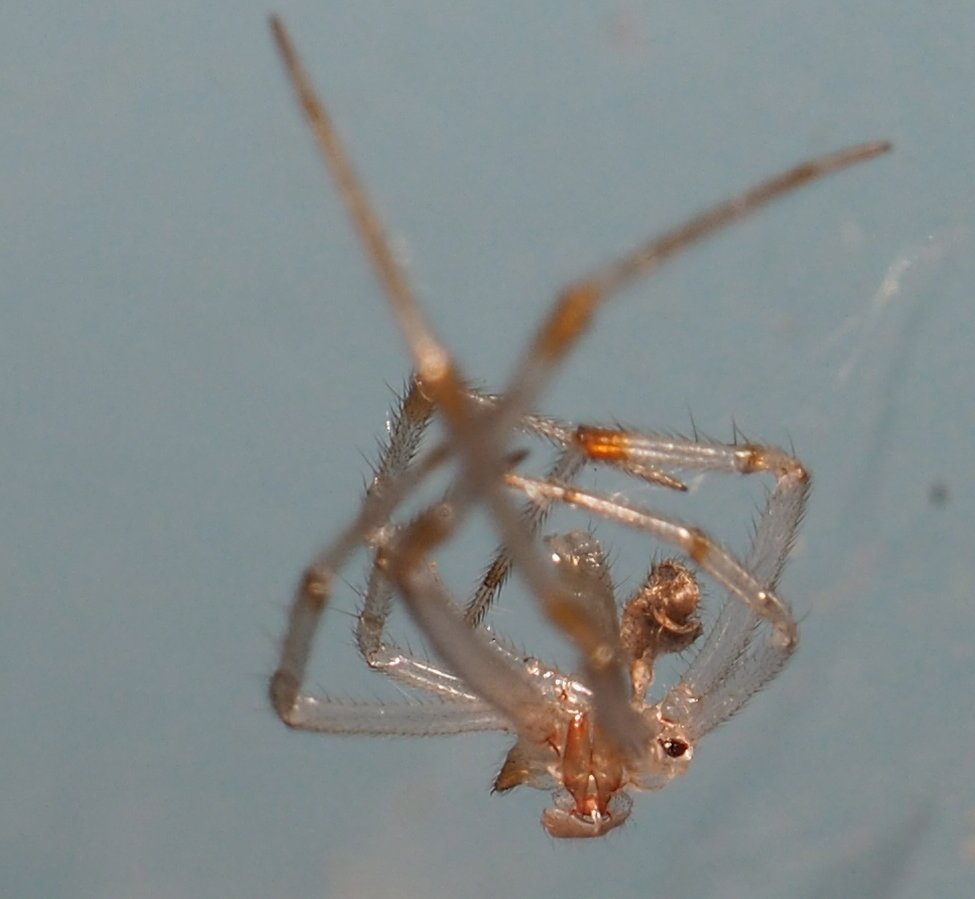
Let's look now at the new spiders that keep coming out. First one is inconnu, which means I don't know it. The second is a growing baby Cross Orbweaver, and the third is a Jumper peeking from out of the shadows.



Here are an Orchard Orbweaver, a Pirate Spider, and another bit of Spider Art.

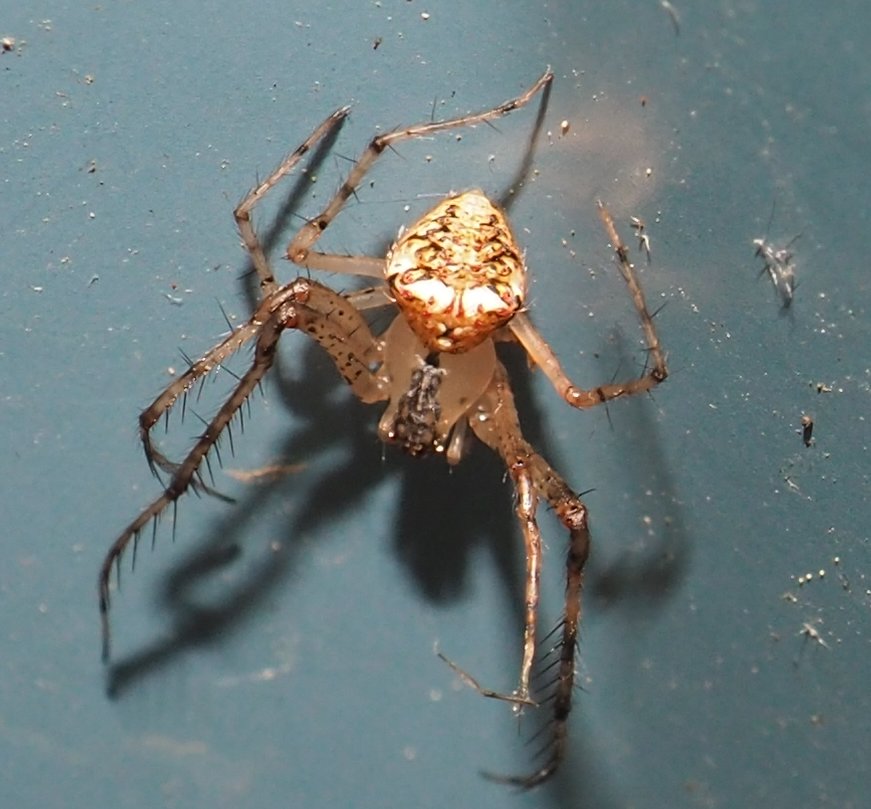

Here is one of my favorite spiders whose scientific name is Enoplognatha ovata or Theridion ovatum. It has the common name of Candy-striped Spider. Guess why....
 (Theridion ovatum 7 4 18 3.jpg)

Now for our beloved wasps. I'm especially interested in the Ichneumon Wasps.



Here is one of my favorite ichneumons. The flashing Zebra colors - they seem to be sparkling before your eyes. The third one may in fact be an Aphid, Psyllid or Barklouse.



Now for the glitz. Where have these little jewels (I mean the Cuckoo Wasps) been all my life? Now I have seen them three or four times and each time the colors make me think they are all different species. The red one belongs to a real division. The next two are of the same dye-lot, though the "autocolor" button in the Samsung postprocessor changes this perception.
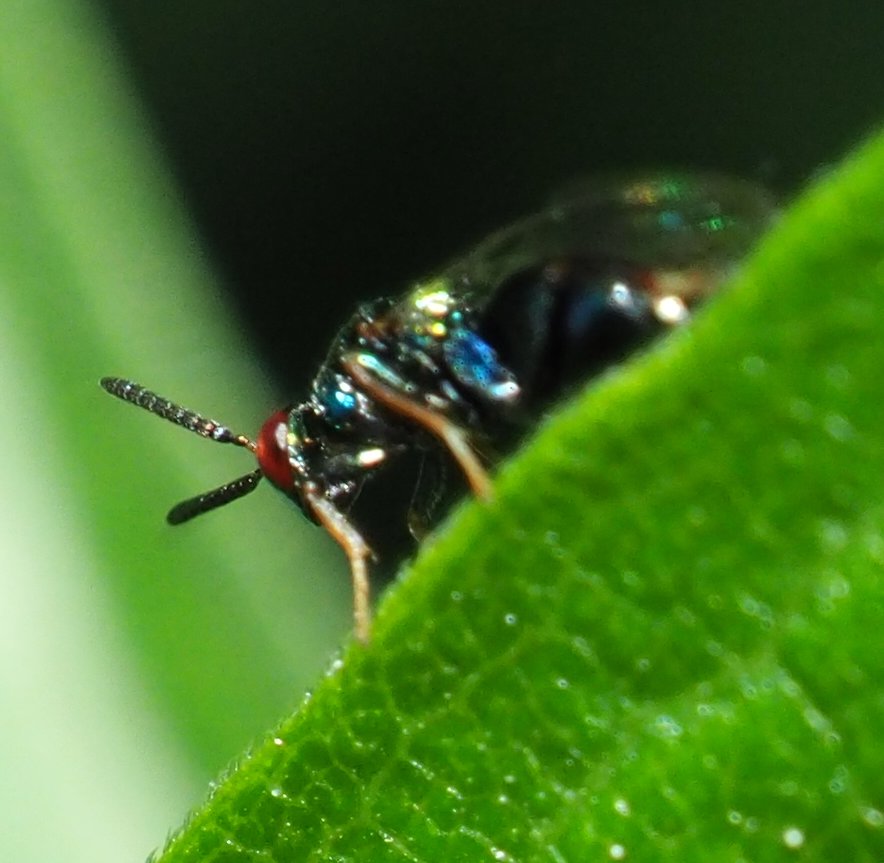


We now find ourselves at the end of our study for this week. I would have loved to be able to show you some nice pictures of the pond, but I fear the heat has overpowered all the potions I keep putting into the water to control the algae. Try to think of it when it was beautiful! It will be again. I've just ordered gallons of bacteria and barley extract.
Goodbye for now, friends. If this week is like all the others, it may be another long one!
Love, Martha
Back to July 1, 2018
Forward to July 15, 2018
Back to main menu
copyright Martha O'Kennon 2018
















































































 (Theridion ovatum 7 4 18 3.jpg)









